This was published 5 months ago
‘Psychopaths are the best’: Confessions from inside the scam industry
From marketing and retention to catastrophe and recovery, the life cycle of the scam industry is breathtakingly cruel and strikingly consistent.
By Aisha Dow
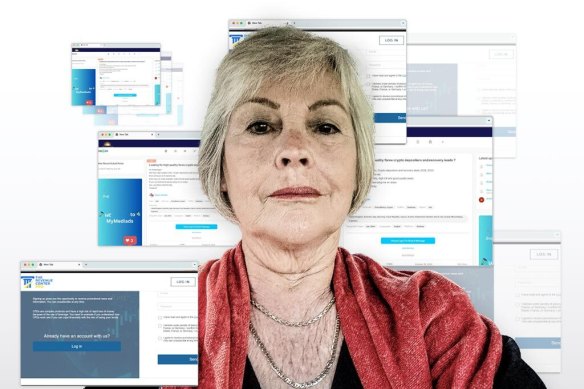
Janelle Free is one of thousands of Australians scammed through an oft-repeated cycle.Credit: Matt Absalom-Wong
Professional scammer Mitch says most people in his industry fall into two categories: They’re psychopaths, who enjoy what they do, or they are deluding themselves about the terrible impact of their crimes.
“Psychopaths are the best agents,” he says. “But I believe any scammer who’s not psychopathic, I honestly believe they will have lasting consequences.”
Mitch is coy on how he wound up managing a scam centre peddling phoney investment schemes in eastern Europe. He also hesitates when asked if he still thinks about people – victims – he had become close to over the years.
“Yes,” he says. “I’ll leave it at that.” But then, after a short pause, he continues.
Scam agents start by honing their skills on low-value victims, hoping to move up the food chain, advancing to new departments where there is more money to be made.
These “low-value” targets are people with the smallest incomes, often with the most to lose.
“You’re not gonna get Mark Zuckerberg, billionaire extraordinaires. No, you get everyone who’s sick, who doesn’t have money, who’s on social support and basically has very bad income,” he says.
“The main thing you do to prove yourself is take their last money, put them in crippling debt. That’s something that you don’t forget.”
This is the breathtaking cruelty of the cyberfraud world. It’s a place where each scam story is slightly different, but there is a familiar pattern.
This masthead’s investigation used accounts from scam group insiders, private investigators and victims to trace the key steps of a typical online investment scam.
People’s journey might begin with a scam advertisement; it might reach a false high as victims are tricked into believing they are making windfall profits; and then it can end with their details being passed on to a new set of scammers who falsely claim they can recover any stolen money.
Australia is considered one of the easier targets for scammers, according to industry insiders and cybercrime investigators. Investment scams cost Australians an estimated $1.3 billion last year.
The fraudsters come for people’s savings, their superannuation and the roof over their heads.
“They promise, promise from the bottom of their heart that everything will be right, but it’s just so full of lies,” says Janelle Free, a retired hairdresser from Queensland.

Janelle Free lost her house in an online investment scam.
“They’d take your blood, if they could. They’d take your organs. They would literally kill you to get the last out of you, and they’re so good at it.”
Asked how much she lost to the scammers, Free says: “I sold my house, darling, and gave him my whole house funds.”
“It all starts from marketing, right?” says Mitch, who is using a fake name. Charming and confident, he is one of several scammers this masthead spoke to who effectively act as double agents, working inside scamming syndicates, while also providing information, sometimes through third parties, to cybercrime investigators or governments.
He explains how he has built rapport with victims, telling the people he’s scamming that he has ties to the country they live in, or that they share the same interest or hobby.
“At the end of the day, if you have any common sense and check where the company is located … you will see there is a scam. So what you do is you create a bond with the client, with the victim, so they don’t do that.”
Marketing is typically outsourced to groups called “affiliates”, organisations that specialise in mass marketing campaigns and search engine optimisation. They collect personal details of potential victims by running scam advertisements, videos and other online content that invite clicks and detail registration.
The affiliates sell these “leads” to companies like the one Mitch works for.
He says affiliate companies charged about $1200 to $3000 for a victim’s details if they had registered with a fake investment platform and then put down a small investment or deposit of around $250. The scamming company might pay $100 for someone’s information if they had only registered their details, but were yet to invest any money in a fraud scheme.
According to Mitch, Facebook is the most common source of victims for his call centre, followed by Instagram.
He says scam ads deleted by Meta were quickly replaced with new ones. By running numerous Facebook accounts and spreading their ad spending among them, criminals were able to keep running a steady stream of advertisements.
“What they usually do is they segregate the accounts. Let’s say they have 100 ads running. It’s not going to be under one roof. It’s going to be under 100 roofs. And if one roof gets torn apart, you just change one roof, not all hundreds.”
“It’s a very, very profitable activity,” says New York based computer security expert Jerome Dangu, who co-founded Confiant, a company that specialises in blocking scam ads.
Dangu says affiliate marketers commonly deploy single-scam ad campaigns that reach millions of viewers globally.
In the recent past, he says scam ads have often mentioned cryptocurrency Bitcoin. These days, the popular theme is artificial intelligence-powered investments.
Often they exploit the images of celebrities, with altered photos or videos that give the impression the famous person is doing or saying something they are not.

A fake advertisement uses Elon Musk, without his permission, to promote a scam.
“In Australia, it’s typically billionaires, but also political figures. They make them endorse these offers that are scams. Another component is a fake advertorial with the logo of a newspaper or an online news site … The first step is to collect a name, an email and a phone number, and then that information is transitioned from one bad actor to another bad actor.”
Sometimes, this trade happens in plain sight. Dangu points out a website where affiliate marketers sell services and scammers seek to buy “leads”. Affiliate marketers even publish blogs explaining how they successfully scammed people.
“They say, ‘I’m a smart nimble marketer, and I did all these smart optimisations, and that was really profitable’, which means ‘I scammed a lot of people’,” Dangu says.
Now armed with people’s names, emails, phone numbers, and sometimes even the amount of money they are keen to invest, scammers move to the “conversion” stage.
South-East Asian scammer Ramon, who is also using a pseudonym, says the criminal enterprise uses “lead qualifiers” to make the first call to victims, using a variety of scripts.
They might ask people if they remember clicking on an ad, tell them “we have received your inquiry about potential investment opportunities”, or say that they “know you’ve been looking for fixed-term deposits”.
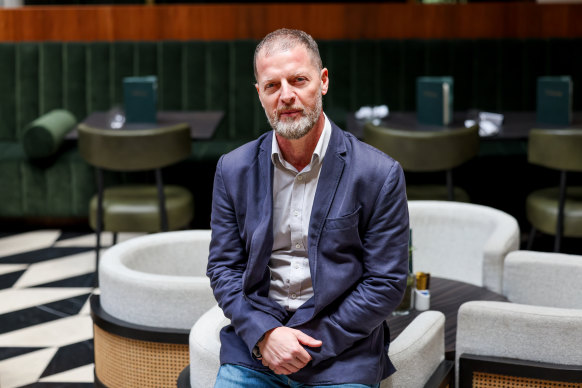
Mark Solomons is an experienced private investigator with IFW Global. Credit: Edwina Pickles
“So most of the time, [the victims] will just respond and say ‘oh, I remember that, I did go online and click on your ad’... That’s the time they start pitching them.”
During this first step, it’s common for victims to be asked for a small initial payment or first-time deposit, typically about $US250 ($386), to sign up to a fake investment platform.
“It’s a form of bait,” says Mark Solomons, a fraud and cybercrime expert with IFW Global. “The scammers will purport to show the victims that this $US250 has magically been turned into $400 or $500 or $600. As a result, they’re an amazing investment scheme.
“The majority [of victims] probably will leave it at that and think, ‘Oh yeah, it looks a bit dodgy, or ‘I can’t really afford to invest any more’ ... but then a significant minority will go on to make larger deposits, and some of those will end up losing millions.”
Meticulous spreadsheets kept by a large scamming syndicate and seen by this masthead give a unique insight into this early step of the scamming process. They show, down to the second, when each victim made their first scam payment, and which particular fake investment brand, with names such as ArrowTeks, Aussie Trust and London Gates, was used to swindle them.
In just one month in 2021, a single team of people overseen by a manager was able to get 1465 Australians to part with a deposit – mostly $US250 but sometimes a little less or little more – the documents show.
Among the rows of Australian victims is a woman called Daphne, many Roberts and several Janets. There are also 62 Austrians, 511 Canadians, 14 Swiss, 159 Germans, 28 Danes, 278 Britons and 65 New Zealanders.
There is a notable column titled: “sales status”. It shows victims who hadn’t answered their phone, or said they weren’t interested in investing.
Some cells have the phrase “in the money”.
This means the fraudsters have extracted information from the victim that gives them reason to think that they’re a juicy target, says Solomons. He says the scammers get a sense of this by asking how much people can invest, what their investment goals are and by judging the victim’s general level of enthusiasm.
It’s also not unusual for criminals to apply another filter to who they target, screening out citizens of countries whose law enforcement they fear, and focusing on those they don’t.
Dan Halpin, whose company Cybertrace specialises in cyberfraud investigations, says while some syndicates are shutting down their German teams, and explicitly avoid US citizens, they have no such qualms about fleecing Australians. In fact, he says scam industry insiders tell him they have just put more staff onto the “Australian desk” – a team of scammers whose shift aligns with the Australian time zone, typically with good English and sometimes with connections to the country.
“The German police and the American police do a lot of work. They’ll extradite people from foreign countries, they’ll do raids in foreign countries,” Halpin says. “But Australia, they know that Australia will do nothing, so it’s just basically a free-for-all for Australians.”
Mitch said he worked briefly on an Australian desk last year, but quickly gave up the job as the hours were “devastating”. The shift began at 5am and ended at 1pm.
While the early steps of an online investment scam tend to be structured, based on set scripts and automated systems, the next phase, often dubbed “retention”, is different.
“The longer the relationship lasts, the less scripted it becomes, because the brokers are starting to develop relationships with people, and they know what pushes their buttons,” Solomons says.
“They’ve been able to persuade them to remortgage their house, to get more money out of them, or to release their superannuation.”
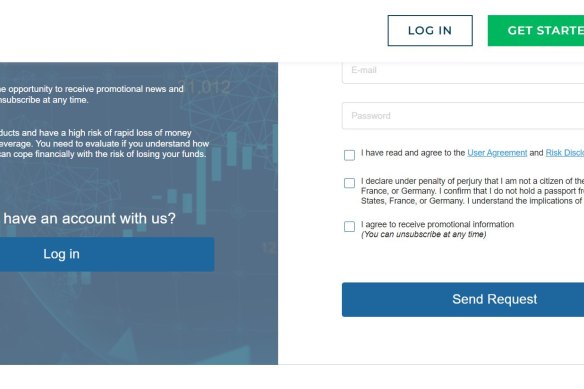
This image shows how a scam website screens out potential victims from countries with tougher enforcement conditions.
Ramon says the strategy he uses to get victims to part with larger amounts of their money usually begins with a call in which he brings “great news” of a promising but time-sensitive investment opportunity.
Potential investors are told that a private company is about to publicly list its shares and they’ll need to get in early, otherwise the offering could be oversubscribed.
“As they say all the time, it’s not what you say, it’s how you say it. So we’re trained to say it with conviction, to make it sound more credible,” says Ramon, who works in a team that focuses solely on Australian victims.
“Once they fill out the application form and send it back to us, [we then] wait a couple of days for approval, sometimes even more, to make it look like it’s real.”
Looking back, Janelle Free says her encounter with investment scammers was more akin to being taken in by a cult than anything else she can describe.
“I feel now like I have been a victim of a religious society where they brainwash you,” she says. “I thought I was a smart person … then to go through this, you just feel so degraded and so humiliated and so stupid, so very stupid.”
For Free, it began with a fake Gina Rinehart scam ad on Facebook in mid-2022 and led to a man who said his name was Steve Fischer and claimed he was a financier based in London, who signed her up to a fake trading platform called Revenue Centre Pro.
But more important was the relationship she developed with the scammer, the so-called Steve Fischer, who wheedled his way into Free’s loving family, became a presence on speakerphone at dinner, and whom she trusted entirely and above the warnings from her own bank.
“How dare the banks block you from investing your hard-earned money?” Fischer would say.
“We are going to give you between 12 and 14 per cent every month on your money. The banks give you, what, 5 per cent a year if you’re lucky?”
Fischer would ask Free to send him photos of the fish she had caught in her dinghy and the pair planned for a day when Fischer would visit Australia, and she could take him fishing and camping, too.
“I just thought he was like God’s gift. To have someone helping me to be more financially secure [so] that I could help my children. I just had such faith in him and such belief.
“I’d said to him, ‘I hope you’re always going to be in my life’. And I said that to him, I think two weeks before he took all of our money.”
Rather than just silently disappearing with their loot, scammers will often fake a catastrophic investment event. There’s a strategy behind this.
“The scammers are constantly trying to stay ahead of any online complaints or official investigations, so the more delay and confusion and doubt they can create at the end of these relationships, the safer they are,” Solomons says.
“They’ll keep going for as long as they possibly can, and then there’ll be a decision taken, probably at a fairly high level of a syndicate … as to when to pull the pin. Typically, it’s by engineering some sort of fake event, ‘Oh, there’s been a software glitch and we lost all the money’, or, ‘We had a rogue trader who stole your money’.”
Free remembers she was told that Fischer was sick the night it all came crashing down. A man called Jacob was in his place.
“It was very different to how I’d ever traded before,” Free says. “And he said ‘This is the big one, Janelle. This is where all your children pay their mortgages off’. And I was so excited … I was counting the zeros because I’ve never traded with this much money.”
Yet when she logged back into her account the next day, everything was in the red. Where there had been hundreds of thousands of dollars in profits, there were now thousands of dollars of losses.
Fischer said he was sorry, and promised he could get her money back, if only she could find him another $30,000.
“Another 30,000?” Free replied. “Steve, you know I haven’t got any more money at all.”
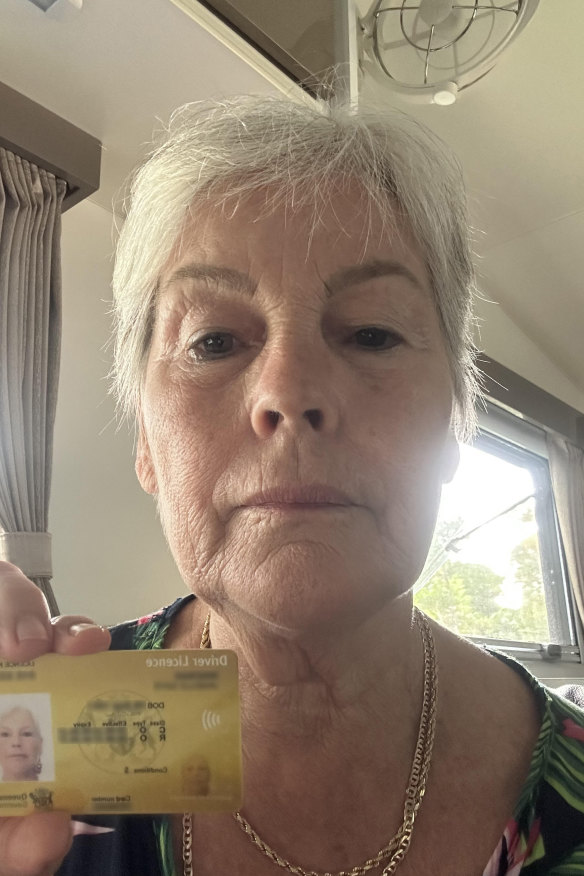
Scammers asked Free to take this photo with her driver’s licence to verify her identity. It illustrates the tactics they used to give her the impression they were a legitimate investment company.
Several months before, in March, Fischer had convinced Free to sell her house, spinning her stories about a looming boom in the cryptocurrency Bitcoin. He said it would bring Free and her family untold prosperity if she took advantage of it.
Free had purchased land at Pacific Pines on the Gold Coast many years ago, and then borrowed, scrimped and saved to build a house on it. But she’d never been able to afford to live in it.
“The only thing I’ve got left is my house, but that’s what I live off, that’s my income,” she told Fischer, when he asked her if she had anything to sell.
Fischer had replied that if she sold her house, she could buy four houses with the money she was going to earn.
The grandmother of five had more reason to trust him than most. The fraudsters had been paying back Free a proportion of her investment to give the impression of genuine profits.
The house sold for $930,000.
Free estimates that once expenses were taken out, there was about $900,000 left, all sent to Fischer. The scammer also convinced some of Free’s close friends and relatives to invest. Altogether, the seven victims lost more than $2 million.
Even after scammers have robbed their victims of their home and their savings, they’ll still come back for more. This is the next step.
“They call it recovery,” says Maroti, a source based in Europe who gathers intelligence from informants inside scam syndicates.
He says that once people have been scammed, they are often targeted by fraudsters a second time.
They will fleece them again, perhaps by tens of thousands of dollars, telling them a fake story that they have retrieved their lost funds, and need to pay international tax for the money to be transferred.
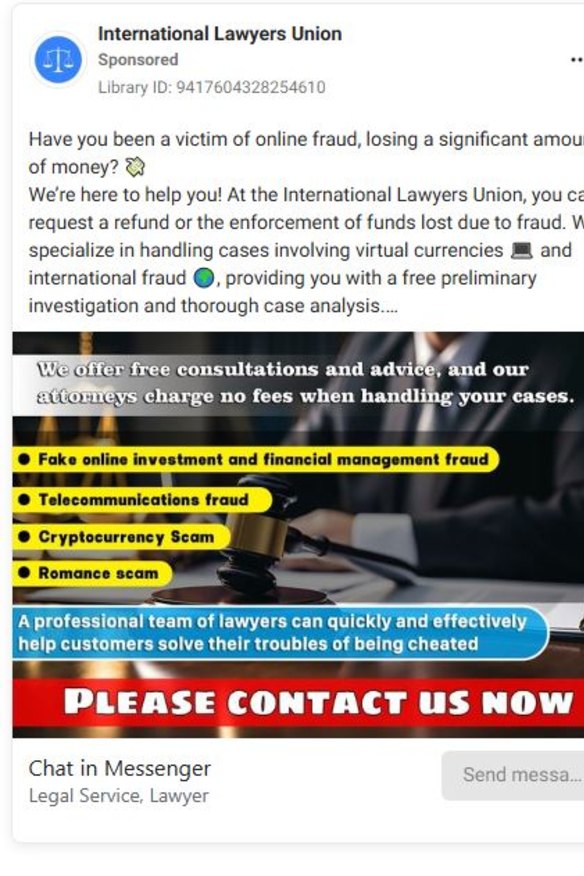
A recovery scam advertisement from social media.
Since she realised she was scammed, Janelle Free has been contacted by two individuals promising they will get her money back. One of them goes by the name Daniel Saunders, and is part of the initial group of scammers.
Where Fischer charmed everyone, Saunders is abrasive and rude.
He has asked Free for more than half a million dollars so that she can reclaim the lost money and continue trading.
“Without signing the documents, I can’t give you the money back!” he once yelled. “Is that clear?”
Free had been stringing along the fraudster with false promises her children would take out their superannuation, hoping to gain some information that might help authorities catch those responsible.
Since reporting the scam, Free says she has spoken to someone from the Australian Federal Police twice, but is frustrated they haven’t been able to track down the scammers.
“I don’t feel there’s been enough effort put in,” she says.
IFW Global executive chairman Ken Gamble says he has forensically linked the syndicate that targeted Free and her associates to an Israeli criminal group with call centres in Cyprus, Bulgaria and Serbia.
Mitch says some scammers justify their actions a bit like a drug dealer would. If they weren’t doing it, someone else would. That their victims are stupid, and would lose their money eventually anyway. That they’re “sheeps” [sic] whose wool is for cutting.
Others are somewhat reluctant fraudsters dealing with difficult personal situations.
“You have people who have family members that are on tubes, and they don’t have money to pay for treatment,” he says.
“If I go to them and tell them, ‘Hey you’re going to work for [€] 2000 ($3257) a month’, and they’re working for 300, for example … Would you continue working for 300 and look at your family member die in front of your eyes? Or would you, you know, say, ‘F--- it, I’m gonna get my hands dirty and try to save them’.”
Ramon says the guilt from his job weighs less heavily on him these days. Part of that is due to his work as an informant. He passes on information to private investigators in the hope it could help victims regain some of their losses. His heart has hardened, too.
“For my first few years, I’m not really having great nights sleeping, but the way these guys actually help us out in being numb with what’s going on is that they always tell us that, ‘Hey, remember, these guys have millions and millions in worth, so they’re OK losing this money’.”
Of course, this is just another one of the scammers’ lies.
Despite her ordeal, Janelle Free appears warm, talkative and bubbly. She’s made a career of cutting people’s hair and “talking to people”, sharing in their worries and stories.
Asked how she has managed to stay so upbeat, Free says she is on medication, racked with guilt for putting the people she loves the most in the path of a charlatan. Her children fret about her and reassure her that it’s “just money”.
“I just wanted to leave them better off than I ever was. I didn’t want a helicopter or a plane, I just wanted to pay off my children’s mortgages. And now I’ve got nothing, nothing for them,” says Free, her voice breaking.
Start the day with a summary of the day’s most important and interesting stories, analysis and insights. Sign up for our Morning Edition newsletter.